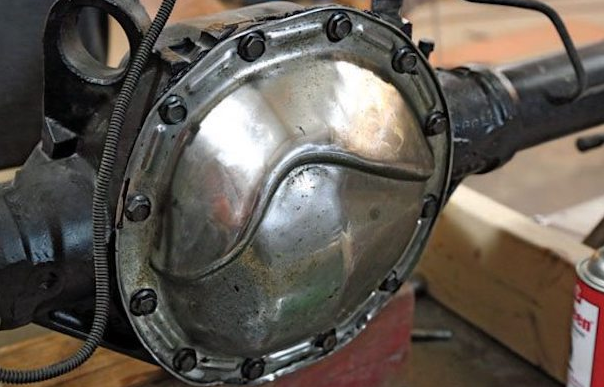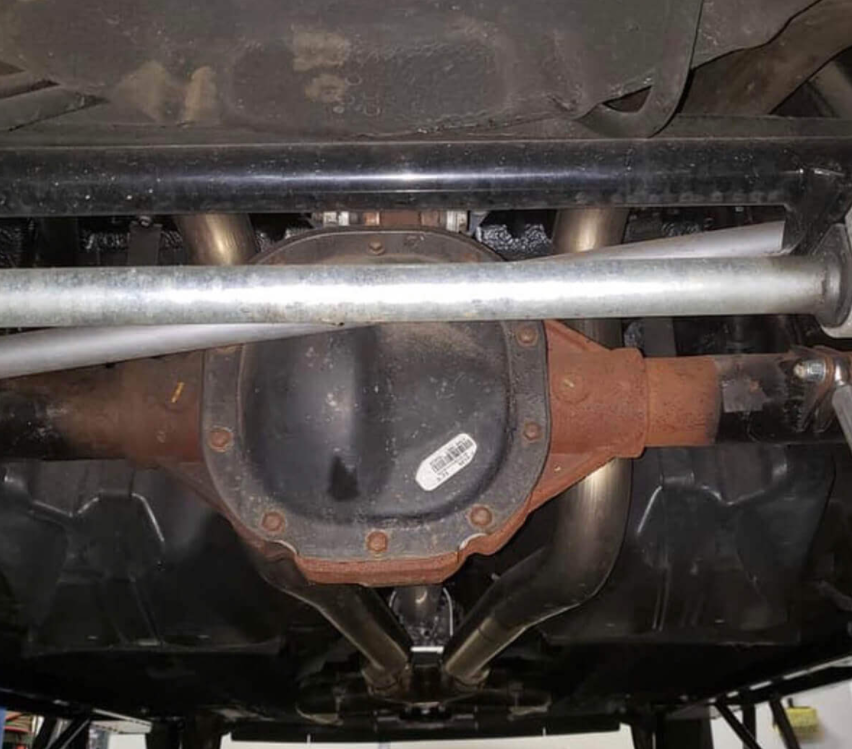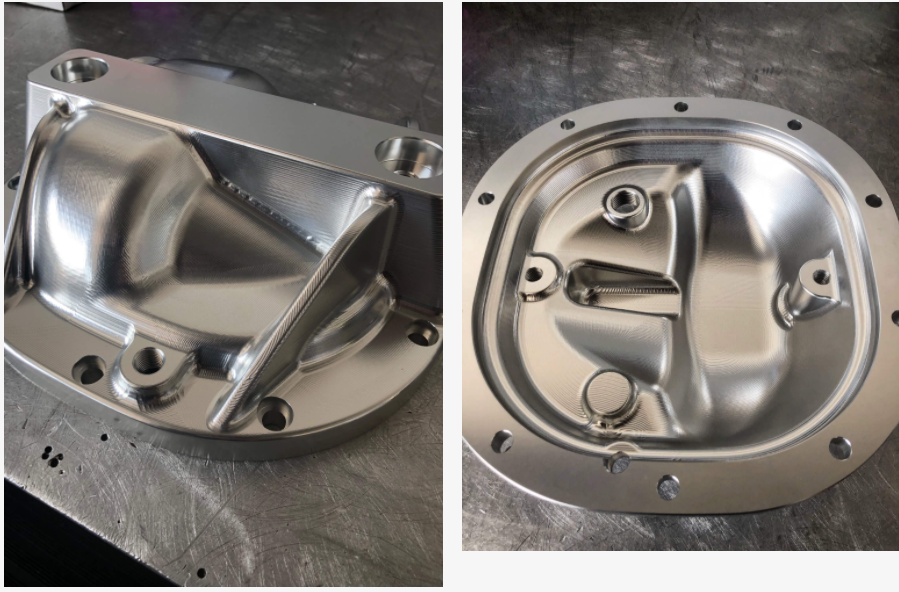There are several reasons to upgrade your differential cover, including increased strength, better heat dissipation and reduced weight.
Upgrade your differential cover for better cooling
Enthusiasts love to push their trucks to the limit, but adding power and hauling heavy equipment add heat and stress to the differential. Keeping gear lube temperatures down is key to extending differential life, and performance differential covers can make a significant difference.
Features like cooling fins allow more surface area for oil cooling, while differential covers constructed of aluminum provide improved heat disbursement that keeps the differential and gear lube cool.
In addition, lighter aluminum differential covers are advantageous for competitors looking to shed overall vehicle weight.
Improved strength
Differential covers constructed of thin steel can dent, or they can bend and peel away from the differential when contacting rocks and other debris while off-roading, leading to gear lube leaking out and contaminants entering the differential and causing excess wear. Enthusiasts who put their pickups through the paces while off-roading often seek thicker, stronger differential covers constructed of heavy-duty iron.
Upgrade your differential cover for easier maintenance
Some performance differential covers include features designed to ease maintenance, including gear lube drain plugs and dipsticks. Some drain plugs and dipsticks include magnets, helping owners check for excessive wear without draining the gear lube.
Enhanced style
Upgrading a differential cover also offers the opportunity to add style to a pickup. Many differential covers are available with chrome-plating and polished aluminum for a beautiful finishing touch for customized trucks.
OEM Differential Covers: Pros and Cons

An OEM differential cover is the one that comes on a brand new vehicle. They’re made of stamped steel, and they’re shaped to make sure the gear lube flows across the gearset correctly. OEM diff covers do have some limitations:
OEM differential
- Some OEM differential covers are thin- just 1/16th of an inch. Thin covers are easily dented or punctured off-road, especially if you’re tackling rocky trails.
- The diff cover flanges are also generally thin. Rocks can easily peel the edge backwards.
- OE covers have been known to rust out and leak, depending on age and environment.
In a nutshell, OEM differential covers are well designed for use on road, but not off road. If you want to make sure your diff doesn’t dump gear oil in the middle of the wilderness, an upgraded cover is probably a good idea.
Cast Aluminum
Cast aluminum covers are lightweight and conduct heat well. Many have fins to aid in cooling the gear oil. Also, many allow for more gear oil to be added to the differential, as compared to stock.
With all this cooling, this type of cover can be great for trucks that tow on a regular basis. However, there are a couple of downsides to aluminum differential covers:
- Aluminum is not great for off road use. Cast aluminum can crack from impacts with rocks, and cooling fins can be broken off the same way.
- Aluminum has more than twice the coefficient of thermal expansion as cast iron. That means aluminum expands twice as much as cast iron when it heats up. So if an aluminum diff cover is bolted to a cast iron differential case, the mating surfaces of the two parts slide across each other as they heat up. There is, of course, a gasket between the two parts. So the gasket is subject to shear forces that will eventually cause it to degrade and seep or leak. This will happen sooner than it would if the gasket were between two more similar materials.
Part of the reason that aluminum is popular is all the styling options…it’s relatively easy for a manufacturer to mill a cool logo or pattern into an aluminum differential cover. Good looks are a selling feature, but it’s not what you need off-road.
Cast aluminum vs Billet aluminum
Cast aluminum components are created by pouring molten aluminum into a mold. Once the molten aluminum solidifies, it can be removed from the mold and a raw cast aluminum part is made. Casting aluminum parts can be very labor intensive because of the time it takes to create molds, remove the casting from the mold and refine the final product.
Cast aluminum parts can be susceptible to breaking under intense loads if there are imperfections during the molding or refining processes.
Billet aluminum components are formed in a different manner than cast aluminum. To more thoroughly understand, I need to explain that “billet” is a solid piece of extruded material. In this case, I am talking about a solid piece of aluminum. A solid piece of aluminum can be used on a CNC machine to cut out high quality products without the need for expensive tooling and refinement processes.
While creating products from billet material isn’t ideal for mass production like casting is, billet products are usually much stronger and more refined. Now that you have all of that information, let me tell you about the product you’re here to learn more about!

Stock 2012 Mustang GT stamped steel differential cover.

Billet aluminum differential cover on 2012 Mustang GT
More details please visit our website!







